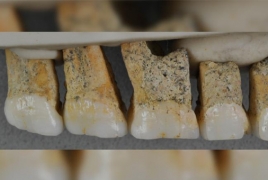
Ancient bones and teeth found in Callao Cave in the Philippines have led to the discovery of a previously unknown species related to humans called Homo luzonensis, according to a new study. The fossils belonged to two adults and one child who lived between 50,000 and 67,000 years ago, CNN reports.
This time frame means luzonensis would have lived at the same time as Neanderthals, Denisovans, Homo sapiens and the small-bodied Homo floresiensis. Like other extinct hominins, luzonensis is more of a close relative than a direct ancestor.
In 2007, a single foot bone was found in the cave and dated to 67,000 years ago. During excavations in 2011 and 2015, researchers found 12 additional hand and foot bones, including a partial femur and teeth, in the same layer of the cave. The researchers have named the new species luzonensis because of where it was found on the island of Luzon.
They are now the earliest human remains found in the Philippines. Previously, Homo sapiens remains were found on Palawan island and dated to between 30,000 and 40,000 years ago.
But what makes luzonensis different from other species? It's all in the distinct premolar teeth, which vary considerably from anything identified in the other species belonging to the Homo genus.
The seven premolars and molars are smaller and more simplified than those of other species. Although some of the characteristics can be compared to Homo erectus and Homo sapiens, the teeth and jaw features remain distinct as far as the odd features they combine.
This factor, along with the fact that the researchers haven't been able to remove DNA from the fossils, makes it difficult to determine where luzonensis fits, evolution-wise.
The two hand bones and three foot bones also show a unique anatomy.
Although separated by millions of years of evolution, luzonensis' toe bone strongly resembles that of Australopithecus afarensis, or the famed "Lucy" fossil. Australopithecus lived between 2.9 million and 3.9 million years ago.

